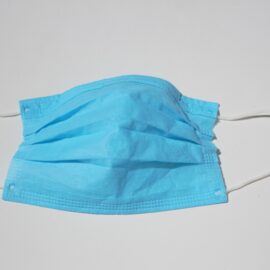

This article is an excerpt from the Shortform book guide to "She Comes First" by Ian Kerner. Shortform has the world's best summaries and analyses of books you should be reading.
Like this article? Sign up for a free trial here.
What is She Comes First by Ian Kerner about? What are the main takeaways of the book?
In She Comes First, Ian Kerner explains that for sex to adequately satisfy both partners, we must change the narrative—men should ensure their female partner orgasms first. And the best way to accomplish this is through cunnilingus.
Read below for an overview of She Comes First by Ian Kerner.
She Comes First by Ian Kerner
Ideas regarding sex in traditional mainstream culture are centered around male anatomy and satisfaction—penetration is the pinnacle of sex, and we know sex is over when the man ejaculates. However, in She Comes First, Ian Kerner explains that these beliefs often leave women unsatisfied.
Ian Kerner is a psychotherapist and nationally recognized sexuality counselor who specializes in sex therapy, couples therapy, and relational issues that lead to distress. He received his doctorate in Clinical Sexology from the American Academy of Clinical Sexologists where he is currently a faculty member. Kerner began focusing on female pleasure because he struggled with premature ejaculation and feeling inadequate in the bedroom. After years of studying human sexuality and honing his techniques through personal experience, Kener realized that the key to having amazing sex is to master the art of cunnilingus so she orgasms first. When his partner came first, Kerner felt more satisfied with his abilities and experienced a better orgasm than ever before.
She Comes First is an instruction manual for men on how to perform cunnilingus that will satisfy their female partner, and in turn, produce the best sex possible. Kerner notes that while his book was written primarily for a male audience, his advice will benefit anyone who has a female partner. The book explains the female sexual anatomy, the techniques that are proven to make women feel good, and how you can integrate these techniques into your next intimate session so that your female partner reaches a satisfying orgasm.
(Shortform note: While Kerner doesn’t address this in the book, it appears that his guide is about how to perform cunnilingus on cisgender women specifically. His advice in She Comes First is based on cisgender female anatomy and research performed on cisgender women.)
Male-Centric Sexual Misconceptions
Kerner explains that traditional beliefs about sex—like what it’s supposed to entail, how long it’s supposed to last, and how to know when it’s over—are based on male anatomy and rarely result in female orgasm. So the first step in learning how to please your female partner is to understand what these beliefs are and why they prevent female orgasms.
First, most men believe that penetration is the part of sex that feels best for men and women; however, Kerner explains that this is not the case for the vast majority of women. Most women need external clitoral stimulation to have an orgasm, and vaginal penetration alone fails to do this. Consequently, men are more likely than women to orgasm during sex.
(Shortform note: Kerner explains that men are more likely than women to orgasm during sex because their preferred method (penetration) is based on what pleases them, not what pleases women. Experts agree that heterosexual women generally have lower rates of orgasm than their male partners and add that women in lesbian relationships are much more likely to orgasm during sex. Whereas heterosexual women orgasm during sex with a familiar partner 61.6% of the time, lesbians orgasm 74.7% of the time. Researchers suggest that this might be because the expectation to prioritize male sexual pleasure is absent in lesbian relationships.)
Second, men can both get aroused and reach orgasm much faster than women. Whereas most men orgasm within two minutes of stimulation, women generally need more than 21 minutes of clitoral stimulation to reach orgasm (not including foreplay). Consequently, men tend to orgasm before their female partner is even close.
Third, sex is traditionally over once the man ejaculates. Kerner explains that this is because after ejaculating, men tend to quickly lose their erection, arousal, and energy and need a long recovery period before being able to have sex again. This is called the “refractory period” and varies in length between men. Since men usually orgasm first and then tap out, women often don’t get the chance to orgasm at all before the session is over.
Ultimately, traditional beliefs about sex deny women the proper stimulation and time needed for them to reach orgasm. So to ensure that your female partner is equally satisfied during sex, Kerner says you must ensure that she orgasms first.
Female Sexual Anatomy
To make sure your female partner has a satisfying orgasm, Kerner says you must understand her sexual anatomy—where her pleasure points are, how to stimulate them, and how her body reaches orgasm.
Kerner explains that all female orgasms come from clitoral stimulation. The clitoris nerve network is spread throughout the female sexual region. The outside of this region is called the vulva and the inside is called the vagina.
The clitoris is primarily stimulated from the vulva where the nerves are most sensitive—only a small bundle of clitoral nerves can be stimulated from inside the vagina. Kerner elaborates that the external clitoral nerves are extremely sensitive (much more than the penis) which is why cunnilingus is the best way to stimulate them—the tongue is soft, gentle, and can be far more precise than your penis or fingers.
The most sensitive part of the clitoral network, and the part that drives most female orgasms, is the clitoral head. Kerner warns that the head is so sensitive that overstimulation can be uncomfortable, or even painful, making orgasms difficult.
After the clitoral head, the most sensitive part of the vulva is the front commissure where the clitoral shaft is visible. A similarly sensitive point is the spot below the head where the inner lips of the vagina meet, called the frenulum. Next is the perineum—the stretch of skin between the vaginal entrance and the anus. After the frenulum is the labia minora—the sensitive inner lips that protect the head, urethra, and vagina. Last but not least is the labia majora, or the outer lips. Kerner emphasizes that each of these parts are very important in the arousal and stimulation process, regardless of where they rank from most to least sensitive.
During Kerner’s instructions on cunnilingus, he also references a few other parts of the female anatomy that aren’t very sensitive but can be used to help stimulate your partner. First, there’s the fourchette—the point right below the vaginal entrance where the inner lips meet. Next is the mons pubis, the bony area above the vulva where pubic hair usually grows. Finally, the anus can also be a point of stimulation.
The Four Steps of Sexual Response
Once you understand the clitorial network and its key players, Kerner explains that you must understand the female sexual response process. Kerner divides the process into four steps: excitement, plateau, orgasm, and resolution.
How to Achieve Female Orgasm
Now that you understand the basic functions of female sexual anatomy, it’s time to focus on when, how, and where to touch your female partner so you can walk her through each stage of the sexual response process until she reaches orgasm. Kerner breaks this process down into three steps: foreplay, cunnilingus, and after-play.
Foreplay
Kerner defines foreplay as everything that comes before clitoral stimulation. He explains that stimulating your female partner before touching her clitoris is necessary because women require anticipation to become properly aroused.
Kerner recommends several techniques to pique her anticipation and arousal:
- Drop hints throughout the day with sexy messages, phone calls, whispers, and touches.
- Fantasize together—talk about the things you both crave and incorporate them into your next session. For example, lingerie, restraints, candles, music, and so on.
- Touch her body tenderly—romantic touches such as stroking her hair, kissing her forehead, or rubbing her feet can increase mental and physical arousal.
Touch her body sensually—touching sensual areas like her breasts, nipples, inner thighs, and labia majora once she’s aroused can quickly intensify her anticipation. Kerner adds that using artificial lubrication can help.
Cunnilingus
Once your female partner is sufficiently aroused, Kerner says that it’s time to move on to cunnilingus where you’ll build her arousal even further until she orgasms. We can break Kerner’s process down into four major steps: making first contact, establishing rhythm, introducing manual stimulation, and bringing her to orgasm. This process should take anywhere from 15-45 minutes, not including foreplay.
After-Play
Kerner explains that women can orgasm repeatedly, so once she’s achieved her first orgasm, you can move on to other forms of sexual play that will make you orgasm as well. However, before moving on, give her a few minutes to cool down. To do this, return to foreplay activities—kiss her, embrace, and share soft touches.
When she’s back to her aroused state, you can move on to other forms of play such as penetration. Kerner says certain positions can improve her likelihood of having another orgasm, such as having her on top facing you. This will press her clitoral head against your pubic bone and stimulate her internal clitoral nerves with your penis.

———End of Preview———
Like what you just read? Read the rest of the world's best book summary and analysis of Ian Kerner's "She Comes First" at Shortform.
Here's what you'll find in our full She Comes First summary:
- Why traditional sexual practices leave women unsatisfied
- Why men should ensure their female partner orgasms first
- An instruction manual on how to satisfy women and engage in the best sex possible






